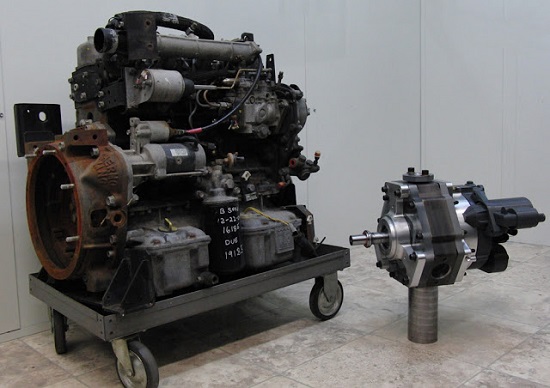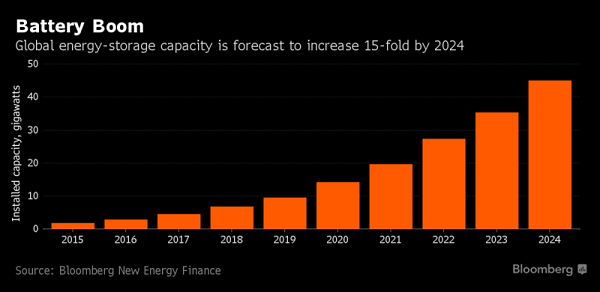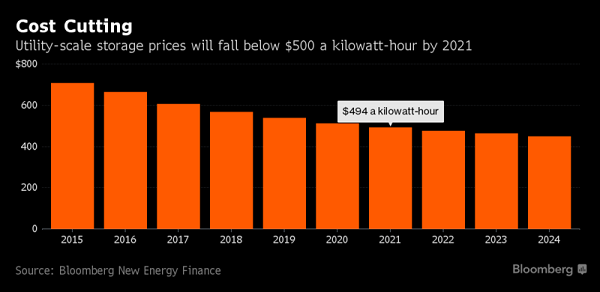1. LiquidPiston engine
The innovative LiquidPiston engine, mentioned by BilB, is targetting a global market worth $460 billion. It has a power to weight ratio more than ten times better than a regular engine:

The big bruiser on the left puts out 35 HP, the one on the right 40 HP.
The petrol version has 20% better fuel consumption, the diesel 50%.
2. Australia on El Niño watch
Normally in any given year there is a 25% chance of an El Niño event in Australia. The Bureau of Meteorology now puts our chances at 50%, along with the proviso that the models are less accurate at this time of the year.
It’s as dry as chips where we are, but humid. The grass is parched and the dams, now around 70%, have not had a decent inflow for three years. However, 2016 was a “neutral” year, which produced the best season in decades for Australian grain growers.
The Climate Council has just released a report Angry Summer 2016/17: Climate Change Super-Charging Extreme Weather. I may take a closer look later.
3. Gallium arsenide solar collectors twice as efficient as existing silicon photovoltaic systems
Melbourne start-up RayGen uses gallium arsenide solar collectors which they say are twice as efficient as existing silicon photovoltaic systems and easily scalable into grid sized arrays.
Their strategy seems to be to take the technology to China to disrupt the $40 billion global solar PV market which is expected to triple in size in the next decade.
RayGen’s technology uses curved industrial mirrors as cheaply available solar collectors and orients them so as to follow the sun and concentrate its rays on a satellite-quality gallium arsenide generator mounted on a tall post. A single 10-centimetre square generator module can generate 2 1/2 kW of energy – enough to power a small house…
RayGen was one of a number interesting developments seeking funding from the Clean Energy Innovation Fund, a CEFC fund.
4. Trump to cut climate monitoring
The Trump administration plans to eliminate NASA’a Earth observation program, shifting its work over to NOAA, so that NASA will only focus on deep space, not “politically correct environmental monitoring.”
Then they want a 17 percent cut in National Oceanic and Atmospheric Administration (NOAA)’s overall budget — with the deepest cuts coming from earth observation.
- Under the draft Trump plan, NOAA’s satellite program would be cut by more than a half billion dollars. These cuts would be “devastating” both to NOAA and the United States, extreme-weather expert Dr. Kevin Trenberth told ThinkProgress.
Who cares about agricultural forecasting, disaster planning, weather prediction, and predicting the path of extreme events like hurricanes, tsunamis, and tornadoes?
5. The age of the giant battery
Bloomberg suggests that the age of the grid-scale battery is almost upon us. Globally about $2.5 billion will be spent this year, but this will increase 15-fold by 2024:

They say that battery costs have declined 40 percent since 2014, but still look expensive, and will not be below $500 KW until 2021:

6. CEFC sees a future in renewables
- Clean Energy Finance Corporation chair, Jillian Broadbent, says Australia’s energy system can safely accommodate significantly higher levels of renewable energy, as long as this was “planned and coordinated” with the rollout of smart technologies, including demand management and battery storage.
Also:
- “We’re close to finalising the transactions under our (large-scale solar) program, and we’re seeing falling technology costs,” she told the conference.
“Now we’re looking to have the same impact with large-scale storage, also working alongside ARENA to support the accelerated deployment of batteries and pumped hydro.”
But she sees grid security starting with energy production and storage at a household level.
7. Manufacturers slugged by power prices
That was the headline on the front page of the AFR on Tuesday:
- Shell-shocked businesses are reassessing investments and jobs after being slugged by huge increases in their electricity bills driven by the imminent closure of the giant Hazelwood power station combined with hot weather and rising “green” power costs.
As commercial customers go to renew their power supply contracts, they are seeing a direct hit from the spike seen in forward prices for electricity in recent months. The Hazelwood closure, set for the end of March, has also heightened worries about the risk of blackouts on a grid with reduced access to baseload power.
Hardware manufacturer Alchin Long Group is looking at a new two-year contract from Origin Energy which has surged from $55.30 per megawatt-hour to $109.70. They were bringing operations back to Sydney from China, but may have to think again.
Aluminium scrap processor Weston Aluminium pays $57/MWh on its existing contract. They are hearing prices of $150 in the market for the future.
8. Bruce Mountain says it’s the price of gas, not renewables
Bruce Mountain took a look at why Victoria’s demand-weighted average wholesale electricity market price rose by 46% in 2016, compared to 2015.
For starters, he finds that it is not higher market volatility that causes prices to rise. He says:
- gas prices, as measured by the average quarterly prices in the Victoria Gas Market, rose 69% from $4.12 to $6.69 per GJ.
That’s the basic reason. Prices flow from one state to another. And that story, of course is the story of the coal seam gas exports from Queensland.
Renewable generation in SA has depressed wholesale prices compared to what they otherwise would have been, he says.
In the AFR on Wednesday it was Gas squeeze gets worse on the front page. Polystyrene foam cups manufacturer Remapak is being “crippled” by a tripling in its gas price in the past two years.
Seems now producers say there is gas available, at a price.
9. Quiggin says renationalise the electricity grid
Prof John Quiggin says:
- a unified national grid, with a single authority running transmission networks and the interconnectors between them. This would still allow competition in generation, but would abandon the idea of market incentives in the provision of network services.
Electricity networks are considered to be natural monopolies. Unlike other industries, where it makes sense for lots of businesses to compete and drive costs lower, the cost and importance of supplying electricity means it make sense for one business to control the market.
Given this status, this authority should not be a privatised firm or even a corporatised government enterprise. Instead, it should be a statutory authority with a primary mission of delivering energy security at low cost.
We need just one statutory authority for the whole eastern states sector. The process of renationalising may have to happen a piece at a time, however, perhaps beginning with SA and Tasmania.
Not sure how that is going to cure the price of gas.
Anyway Nick Xenophon says he won’t talk about company tax cuts until Turnbull deals with the energy crisis.


Steve Austin had a long interview with John Quiggin this morning, who clearly has the whole electricity system in his massive brain. They don’t seem to post these interviews on the net any more, but I’ll try to find it tonight.
As Ootz said here , just about everyone is in favour of an energy intensity system (EIS) including electricity suppliers and banks.
Australia has plenty of Arsenic; not sure about Gallium though.
Anyway, even if we had mountains of Gallium-bearing ores to match, our heroic big investors would be too frightened to take a punt on this new technology so we’ll buy it back from China as ten times the price – as usual.